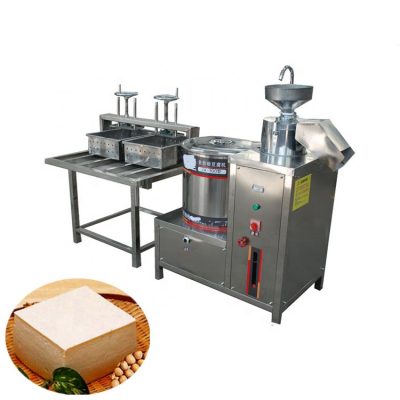Project Report For Soya Paneer Plant
Introduction
Project report for Soya Paneer Plant is as follows.
Soya paneer (tofu) is a soybean product made from the curd of soymilk, an inexpensive and nourishing, protein-rich food. Low in fat, tofu is versatile and also offers numerous health advantages. The tofu is rich source of protein, calcium and good in nutrients like iron and phosphorus.
Soya paneer makers employ soy milk to create this healthier type of paneer, whereas regular paneer is a dairy product. Tofu or soya paneer has a texture similar to cottage cheese or paneer. It has a mild flavor and can be used in both savory and sweet dishes. It is frequently seasoned or marinated to suit the meal and its flavors, and it absorbs flavors well because of its spongy structure.
“Tofu is a much healthier alternative to paneer.” 100 grams of tofu contains approximately 60-65 calories, whereas 100 grams of paneer may have approximately 260 calories. Tofu contains more iron than paneer does. Both have a sufficient amount of protein.”

Manufacturing Process of Soya Paneer Plant
Raw Material Preparation: The first step is to source high-quality soybeans. These soybeans are thoroughly cleaned and inspected to remove any impurities or damaged beans. After cleaning, the soybeans are soaked in water overnight to rehydrate them.
Grinding and Extraction: The soaked soybeans are then ground into a fine paste using a grinder or mill. The resulting soybean paste is transferred to a large container and mixed with water. This mixture is then heated to extract the soy milk from the paste.
Coagulation: Once the soy milk is extracted, it is transferred to a cooking vessel and heated again. A coagulating agent, such as calcium sulfate or magnesium chloride, is added to the soy milk. The coagulant helps to separate the protein from the liquid and form curds.
Curd Formation: As the coagulant is added, the soy milk starts to curdle, forming solid curds. The curds are gently stirred to ensure even distribution of the coagulant and consistent curd formation. The size of the curds can vary depending on the desired texture of the final product.
Pressing: The curds are then transferred to tofu molds lined with cheesecloth or food-grade fabric. The molds are filled with curds and pressed to remove excess liquid. This pressing process helps to shape the curds into a solid block and improve the texture.
Cooling and Packaging: After pressing, the tofu blocks are cooled to room temperature. Once cooled, the blocks are removed from the molds and packaged. Tofu can be packaged in various forms, such as vacuum-sealed packages, water-filled containers, or in bulk.
Optional Processing: Depending on the desired type of tofu, additional processing steps can be carried out. For example, if soft tofu is desired, the tofu blocks may be soaked in water to maintain a higher moisture content. Additionally, the tofu can be cut into different shapes or sizes, such as cubes, slices, or strips, before packaging.
Quality Control and Storage: Throughout the manufacturing process, quality control measures are implemented to ensure the tofu meets the desired standards of taste, texture, and safety. Once the tofu is packaged, it is stored in a temperature-controlled environment to maintain its freshness and extend its shelf life.
Market Potential Of Soya Paneer Plant
In 2022, the worldwide tofu market will be worth $2.7 billion. Looking ahead, the market is expected to reach US$ 3.6 billion by 2028, with a 4.9% CAGR from 2023 to 2028.
Significant expansion in the food and beverage industry, as well as rising customer preferences for vegan food products, are among the primary factors driving market growth. Low-fat and low-cholesterol vegan and soy-based food products are becoming increasingly popular as a result of rising health consciousness and the development of various lifestyle disorders.
Furthermore, the continuous introduction of novel product varieties such as soya-based sauces, burgers, hot dogs, ice-creams, shakes, and desserts is fueling growth. Restaurants, cafes, and other eateries are experimenting with different flavors and combinations of soya in order to provide their consumers with novel and unusual cuisine.
Soya paneer is a gluten-free and nutritious dietary option. Tofu is becoming more popular as a high-protein vegan option to meat and dairy items, which is driving up demands. Soya paneer is used in a wide range of dishes, including burgers, hot dogs, sauces, ice creams, shakes, and desserts, among many others.
The rising market for premium products is expected to have a major influence on the desire for healthy soya paneer. Extra soft, firm, smooth, sprouted super firm and cubed extremely firm tofu are just a few of the famous item variations.
Project Report Sample On Soya Paneer Plant
Need Help?
Create 100% Bankable Project Report

